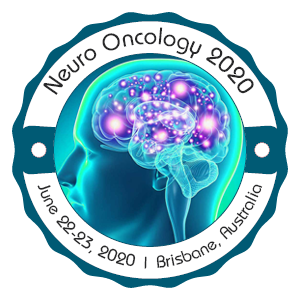Neera Yadav
University of Hyderabad, India
Title: Downregulation of RAP2B promotes human astrocytoma inhibited by involvement of oncogenic mi-RNA
Biography
Biography: Neera Yadav
Abstract
Glioblastoma (GBM) is the most malignant form of primary brain tumor with a poor prognosis among all malignant forms. It remains a major public health challenge, posing a high risk for brain tumor-related morbidity and mortality. RAP2B is a member of the Ras oncogene family and a novel target of p53 that regulates the p53-mediated pro survival functions of cells. RAP2B acts as molecular switches and are able to regulate several cellular processes, including adhesion, proliferation, differentiation and apoptosis by modulating a variety of signaling pathways in addition to cell spreading through its interaction with MAP4K4, TNIK, PARG1 and RPIP9. PLC-€ which is activated interacts with RAP2B facilitates cell growth through activating the Ras-Raf-MAPK/ERK signaling pathway. But clinical importance of RAP2B regulation by oncogenic miRNA in wild type/mtP53 GBM is not known. Here, we are investigating the clinical and functional importance of RAP2B in wt/mutP53 GBM.
Methods:
RAP2B expression was estimated in human astrocytoma tissue (n=64) by RT-qPCR, western blotting, immune-histochemistry and immunofluorescence. RAP2B expression was analyzed with various clinic-pathological parameters and TCGA dataset and correlated with wt/mut P53 and RAP2B downstream targets pFAK and pERK1/2.
Results:
Our findings disclosed down-regulation of RAP2B in malignant astrocytoma associated with pathological grading and patient’s poor survivability corroborating with TCGA dataset. We observed the positive correlation between RAP2B with P53 in GBM tissues which may extort GBM malignancy and poor prognosis.
Conclusion:
Altogether, we found down-regulation of RAP2B in mut type p53 and IDH GBM provokes GBM malignancy and patient’s survivability. The RAP2B overexpression may restrict cell growth and sensitized apoptosis by suppressing EGFR-mediated pFAK-pERK1/2 signaling in wild type p53 GBM cells, suggesting that targeting oncogenic mi-RNA can be a prognostic and therapeutic target for mutp53 GBM.

